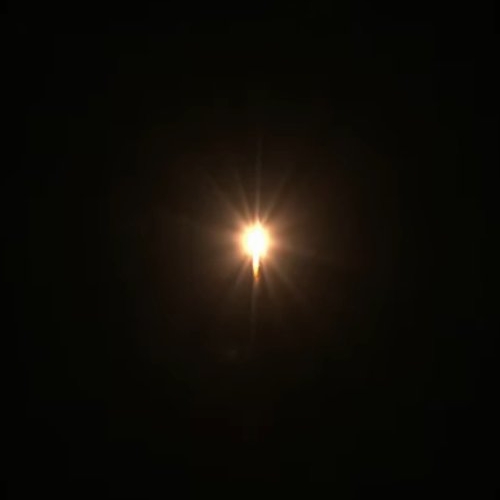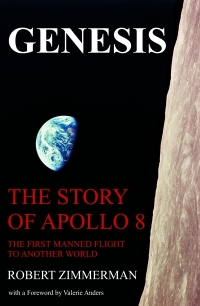Astra successfully completes first orbital launch

Screen capture 12 seconds after liftoff.
Capitalism in space: Astra tonight successfully launched a dummy payload into low Earth orbit. This was their first success after four tries.
The company now joins Rocket Lab and Virgin Orbit as the three operational smallsat rocket launch providers.
The leaders in the 2021 launch race:
41 China
25 SpaceX
18 Russia
5 Europe (Arianespace)
China’s lead over the U.S. in the national rankings has now narrowed to 41 to 40. For the U.S. the 40 launches so far this year ties the entire total from all of last year. With about six weeks left in the year, the U.S. is likely to add a good number of launches to this total. If the total tops 50, it will be first time since the mid-1960s that the U.S. has done that.
The total number of successful launches this year is presently 107. There is an excellent chance the total will exceed 120, a number last seen routinely during the 1970s and 1980s. The highest total ever was 132 in 1975. There is a slim chance that can be beat this year, but if not, I would expect it will be easily eclipsed next year.
On Christmas Eve 1968 three Americans became the first humans to visit another world. What they did to celebrate was unexpected and profound, and will be remembered throughout all human history. Genesis: the Story of Apollo 8, Robert Zimmerman's classic history of humanity's first journey to another world, tells that story, and it is now available as both an ebook and an audiobook, both with a foreword by Valerie Anders and a new introduction by Robert Zimmerman.
The print edition can be purchased at Amazon or from any other book seller. If you want an autographed copy the price is $60 for the hardback and $45 for the paperback, plus $8 shipping for each. Go here for purchasing details. The ebook is available everywhere for $5.99 (before discount) at amazon, or direct from my ebook publisher, ebookit. If you buy it from ebookit you don't support the big tech companies and the author gets a bigger cut much sooner.
The audiobook is also available at all these vendors, and is also free with a 30-day trial membership to Audible.
"Not simply about one mission, [Genesis] is also the history of America's quest for the moon... Zimmerman has done a masterful job of tying disparate events together into a solid account of one of America's greatest human triumphs."--San Antonio Express-News

Screen capture 12 seconds after liftoff.
Capitalism in space: Astra tonight successfully launched a dummy payload into low Earth orbit. This was their first success after four tries.
The company now joins Rocket Lab and Virgin Orbit as the three operational smallsat rocket launch providers.
The leaders in the 2021 launch race:
41 China
25 SpaceX
18 Russia
5 Europe (Arianespace)
China’s lead over the U.S. in the national rankings has now narrowed to 41 to 40. For the U.S. the 40 launches so far this year ties the entire total from all of last year. With about six weeks left in the year, the U.S. is likely to add a good number of launches to this total. If the total tops 50, it will be first time since the mid-1960s that the U.S. has done that.
The total number of successful launches this year is presently 107. There is an excellent chance the total will exceed 120, a number last seen routinely during the 1970s and 1980s. The highest total ever was 132 in 1975. There is a slim chance that can be beat this year, but if not, I would expect it will be easily eclipsed next year.
On Christmas Eve 1968 three Americans became the first humans to visit another world. What they did to celebrate was unexpected and profound, and will be remembered throughout all human history. Genesis: the Story of Apollo 8, Robert Zimmerman's classic history of humanity's first journey to another world, tells that story, and it is now available as both an ebook and an audiobook, both with a foreword by Valerie Anders and a new introduction by Robert Zimmerman.
The print edition can be purchased at Amazon or from any other book seller. If you want an autographed copy the price is $60 for the hardback and $45 for the paperback, plus $8 shipping for each. Go here for purchasing details. The ebook is available everywhere for $5.99 (before discount) at amazon, or direct from my ebook publisher, ebookit. If you buy it from ebookit you don't support the big tech companies and the author gets a bigger cut much sooner.
The audiobook is also available at all these vendors, and is also free with a 30-day trial membership to Audible.
"Not simply about one mission, [Genesis] is also the history of America's quest for the moon... Zimmerman has done a masterful job of tying disparate events together into a solid account of one of America's greatest human triumphs."--San Antonio Express-News


Is there any information about the quality of the orbit reached? If we refer to a ground track graph that was shown during the live broadcast, there was a small deviation from the wanted direction.
Oh well.
Congrats to Astra! The more the merrier.
(And Blue Origin *still* hasn’t put anything into orbit… Where are my engines, Jeff?)
Bezos “Engines? Engines ?! We don’t need no stinkin’ engines !! I’m the richest man in the world without any stinkin’ engines !!”
BTW, Consumer Reports just published its annual survey of automobile reliability and Tesla was Number 27 out of 28. Its Model 3 was its highest rate rated model and came out “average” while the Model X came in at 5 out of 100 points. See what happens when the boss takes his eye off the ball? Sure hope SpaceX is doing better (so far yes, but….).
The fact that this minor league company can do what Blue Origin can’t should embarrass Bezos to no end. Yes sending Captain Kirk into space was cool, but you still need a real space program to compete in the new space era.
I watched part of the broadcast (on Youtube). One thing that struck me, apropos of capitalism, was that the “Mission Control” team looked lean and mean. I wasn’t there, of course, but it seemed like around 10 people. They also had a few shots of the manufacturing and other staff back in, I think, Alameda, but they weren’t more than a hundred, give or take. They may be ramping up, but even so, small and nimble seems a good description, and I hope they find their market niche.
The current design used by Astra for its small launch vehicle “Rocket 3.3” is – as I have already said here – extremely unusual or strange in one respect. And that is the ratio of the mass of the first to the second rocket stage. Usually this value is between 3: 1 and maybe 6: 1. But here it is 27: 1. This means that the upper stage is extremely small in terms of the launch mass of the entire rocket. This can’t be optimal in terms of performance, I would be interested in the reasons for this design.
Such an extreme relationship I saw the last time with the rocket “Juno I (Jupiter C)”, which was a quickly put together solution (by Wernher von Braun) to get the first American satellite into orbit as quickly as possible.
Comment: I assumed that the ratio of the stage masses corresponds to the ratio of their propellant masses, which I determined from the available data for thrust and burn time. I estimated the specific impulses according to other engines of this class. The data are: ground thrust of the first stage: 140.2 kN, vacuum thrust of the second stage: 3.3 kN / burning time of the first stage: 180 seconds, burning time of the second stage: 334 seconds / assumed specific impulses for 1st stage (on the ground): 280 s ; second stage (vacuum): 330 s.This results in a propellant mass flow of 51.0 kg / s for the first stage and 1.02 kg / s for the second stage. The first stage therefore consumes: 9.184 kg of propellant and the second stage only: 340 kg.
Here a now a complete summary of the technical data of Astra’s “Rocket 3.3” that I reconstructed after the few open known details and especially after the mission video:
Launch mass of the total rocket: 11,021 kg
1st stage:
Ground thrust: 140,200 N / vacuum thrust: 155,300 N (total for five engines)
Specific Impulse: 280 seconds (ground), 316 seconds (vacuum);
Propellant mass flow: 51.0 kg / s; Burn time: 180 seconds
Propellant mass: 9.384 kg (including 100 kg residuals at cut-off assumed and 100 kg consumed before lift-off)
Dry mass of the stage (including stage adapter): 1,100 kg;
Ratio of empty to propellant mass: 0.117
2nd stage:
Vacuum thrust: 3,296 N, spec. Impulse (vacuum): 330 seconds; Propellant mass flow: 1.02 kg / s; Burn time: 334 seconds
Propellant mass: 350 kg (including 10 kg residuals at cut-off)
Mass of 2nd stage + payload at orbit insertion: 137 kg
Dry mass of the stage: 77 kg
Ratio of empty to propellant mass: 0.221 (fits to a pressure-fed design)
Weight of the payload fairing: 60 kg
Payload mass: 50 kg